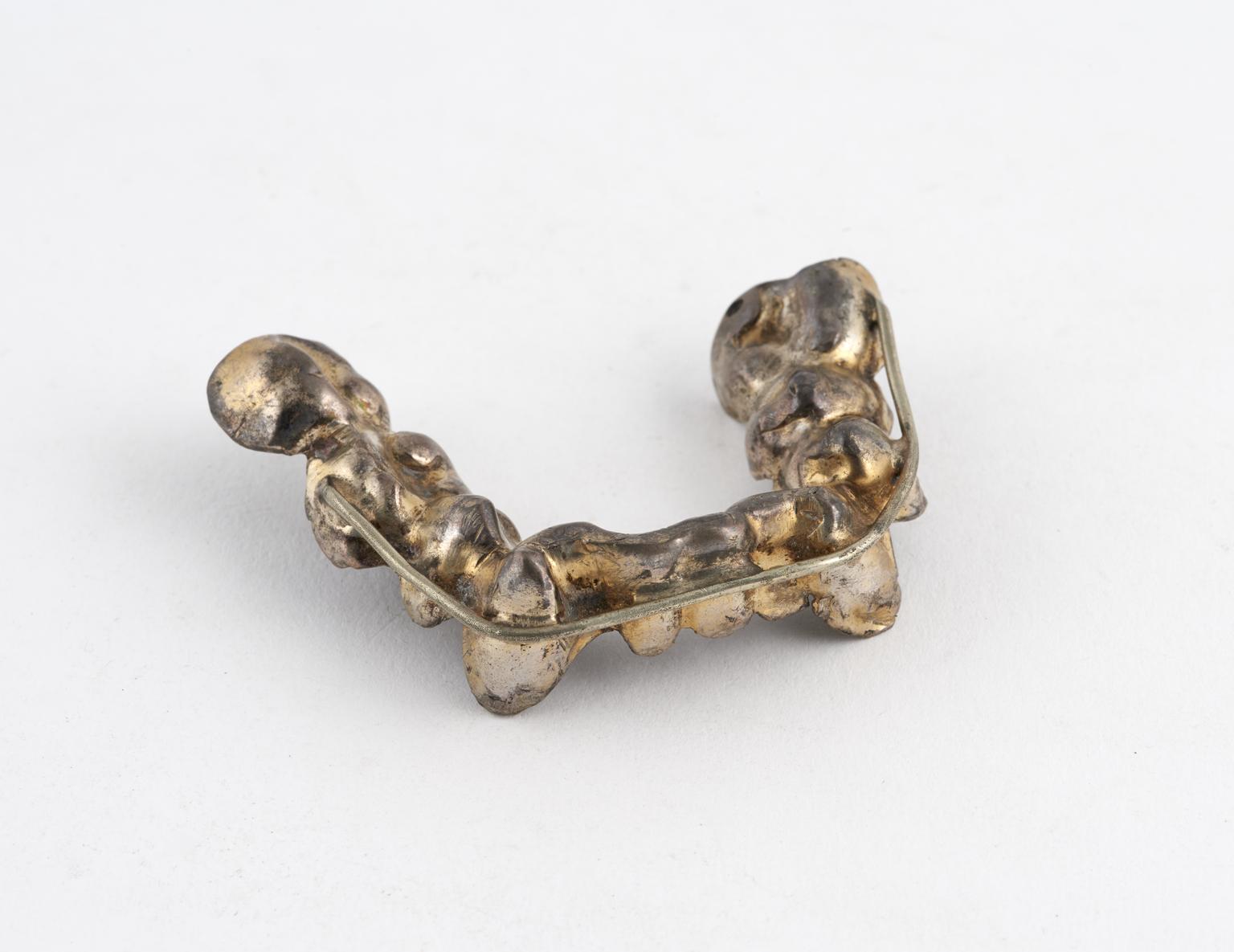
Intraoral splint
1917-1920
Two intraoral splints, mandibular, for mandibular fracture, silver gilt, made at Queen Mary's Hospital, Sidcup, south east London, a hospital specialising in facial injuries opened in 1917 to treat casualties from the First World War, 1914-1918.
The First World War (1914-1918) revealed the terrible impacts that industrialised weaponry could have on the human body. The nature of trench warfare also meant that faces and heads were particularly vulnerable and over four years thousands of men fighting with the British forces received serious facial wounds. These injuries were life-changing at a personal level, but they also provided the raw material for major advances in the specialist fields of reconstructive surgery.
In Britain, progress was driven by New Zealand surgeon Harold Gillies. Having treated over 2000 cases from the Somme battlefield alone, he lobbied the British authorities for what he proposed would be ‘the most important hospital for jaws and plastic work in the world’. The result was the Queen’s Hospital in Sidcup, south east London, which opened in 1917. Within eight years over 11,000 operations had been performed there.
Many of the often complex wounds seen at Sidcup involved the jaws and teeth and treating them required a strong working relationship between surgeon and dentist. Both, in turn, worked closely with teams of technicians, working under William Kelsey Fry who was himself twice wounded on the Western Front. They produced innovative splints, dentures and palate prostheses – such as this example – that helped rebuild the jaws and faces of wounded soldiers.